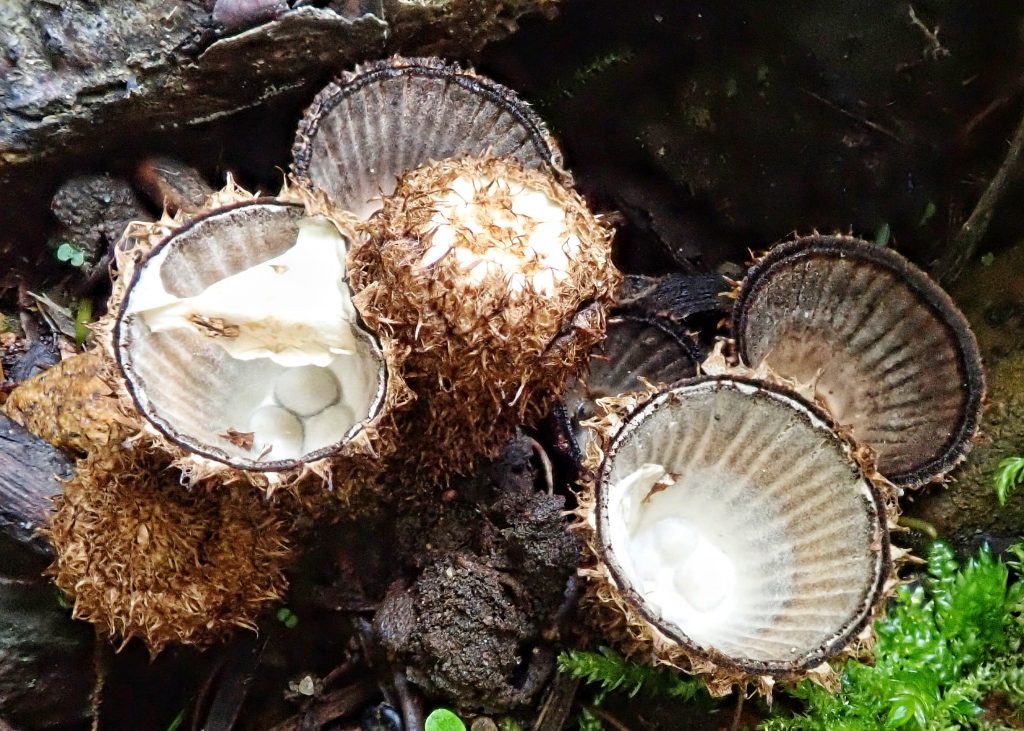
All of the bird’s nest fungi are fun guys to find. And this is a particular favorite of mine because it’s the only one I can immediately identify. Even the scientific name (Cyathus striatus means ‘cup having furrows’) tells you all you really need to distinguish this from other bird’s nest fungi. And when you find a patch with some of the ‘nests’ (peridium) still wearing a fuzzy little cap (epiphragm), and some of the epiphragms with the hair gone exposing the shiny white beneath, then these little 1/2” tall mushrooms can be identified from 10’ away.
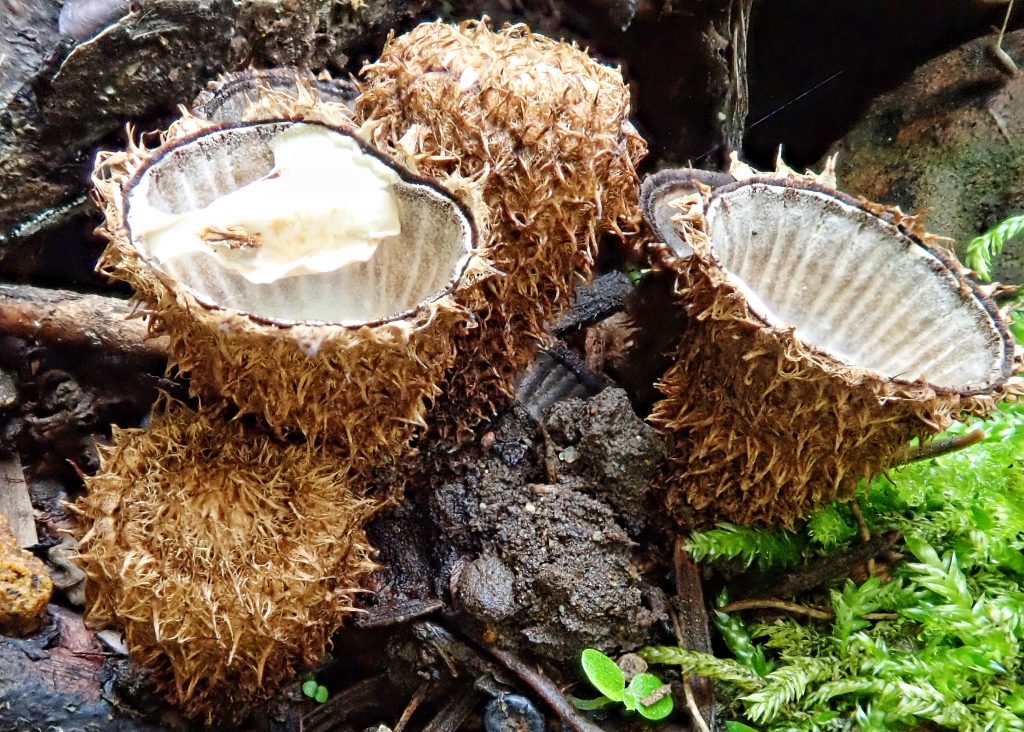
Cyathus striatus belong to the family Nidulariaceae (bird’s nest fungi) which have evolved yet another interesting method of spore dispersal. The spores develop inside lens shaped capsules called peridioles (the ‘eggs’ in the ‘nest’), which are attached to the peridium by strands (mycelia) called a funiculus. When the peridioles are mature the epiphragm rips open and exposes them, where they rest until rain comes and splashes them out of the cup. Since Fluted Bird’s Nest Fungi are saprophytes (consumers of decaying organic matter), as are all of the Nidulariaceae, they need to try to place their spores on a suitable substrate, which for this species is decaying wood, and Cyathus spp. have developed an ingenious way to do this.
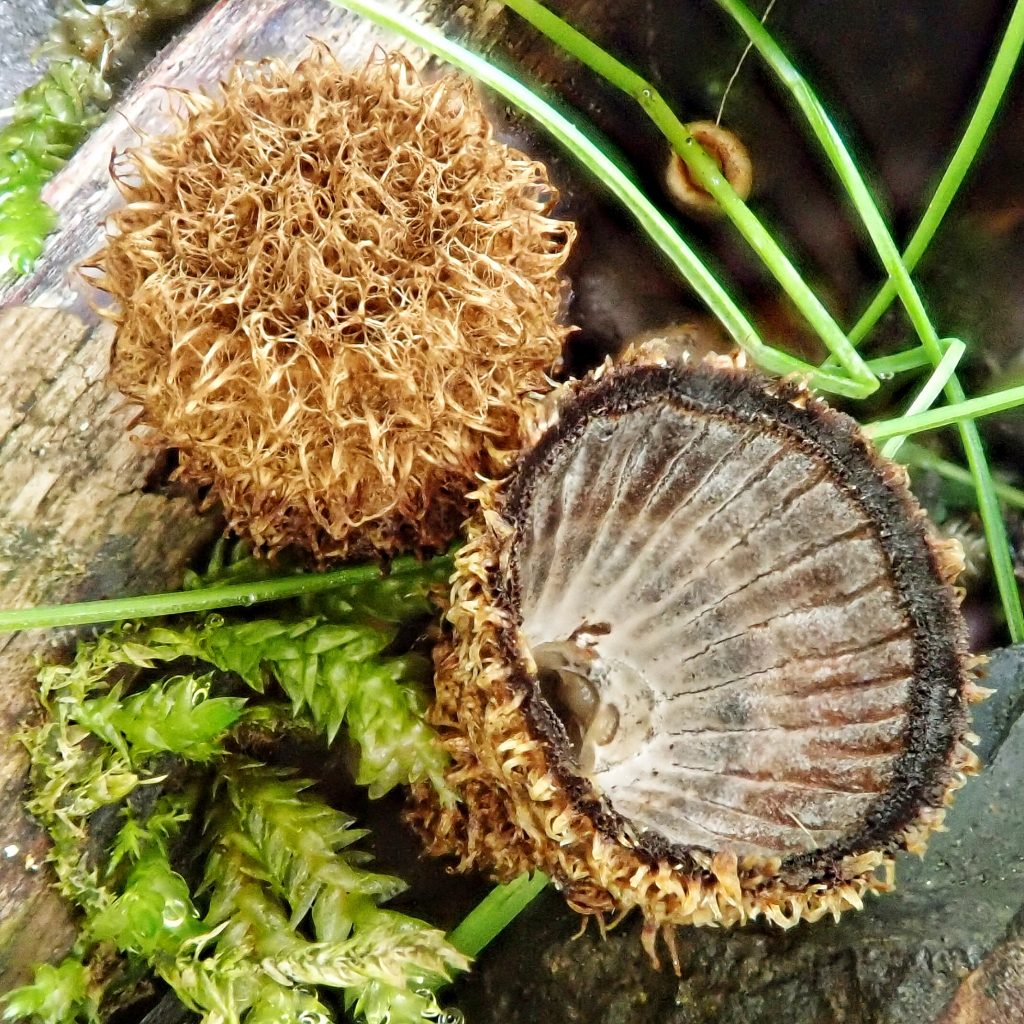
The violence of the splash rips open the funiculus, exposing the funicular cord, which sports an adhesive tangle of threads (hapteron) at its end. As the peridiole is flying through the air the hapteron catches on something (if the something is jutting from the substrate the peridioles will ‘tetherball’ around it), which hopefully keeps the peridiole poised near rotting wood rather than atop soil or rock, so that when the peridiole splits open and releases them the spores have their best chance to germinate and form new mycelia. It is particularly important for this species that many spores manage to create mycelia, because Cyastus striatus will only reproduce (i.e. form fruiting bodies, the ‘nests’ or peridium) if compatible mycelia manage to join.
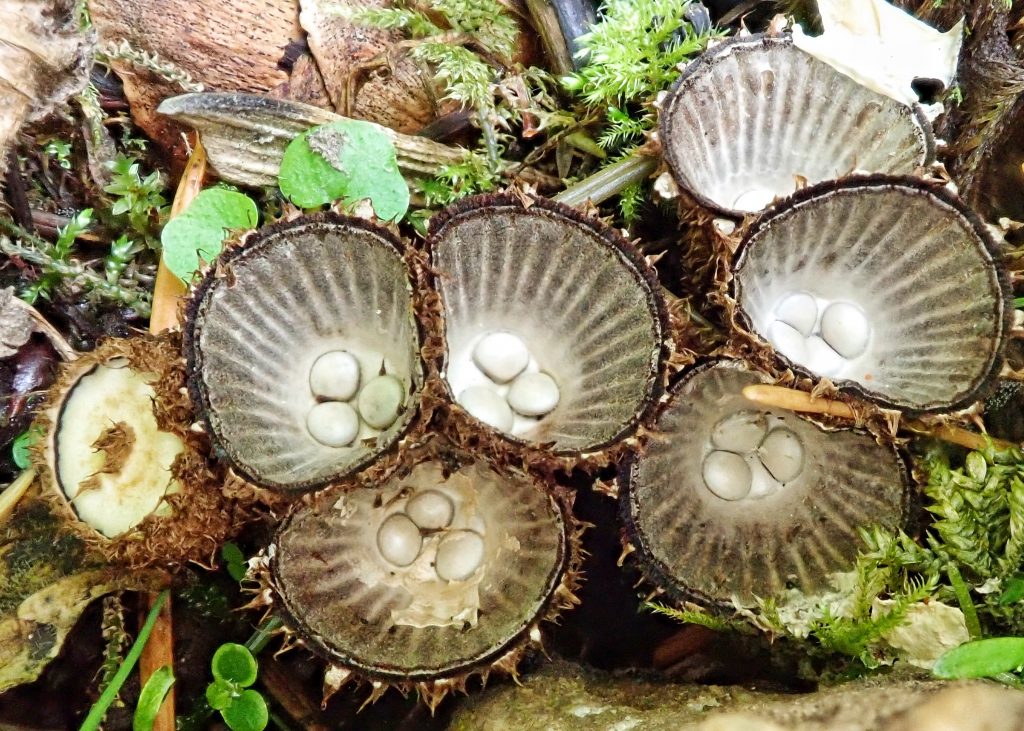
It is interesting to note that the spores from all Nidulariaceae can pass unharmed through the digestive track of herbivores (including slugs and insects), to be deposited at some remove from the ingestion site.
Description– Small (usually 7-10mm tall, 6-8mm wide, though occasionally up to 15mm in both directions), gray/brown/green vase or cone shaped fruiting bodies covered by shaggy hairs (tomentum). The lid (epiphragm) is also tomentous, but those hairs fall off and expose the bright white membrane. The cup interior is alternating dark and light grayish browns, with furrows between the darker ridges. The peridioles (‘eggs’) are light gray and there are seldom more than five per nest.
Similar species–Cyastus stercoreus are also tomentous (hairy), but lack striations in the cup. Nidula spp. are wooly rather than hairy, the epiphragm lacks hairs, and the cup lacks striations. Crucibulum spp. are smaller, smooth sided, tan to cinnamon colored, and lack striations in the cup.
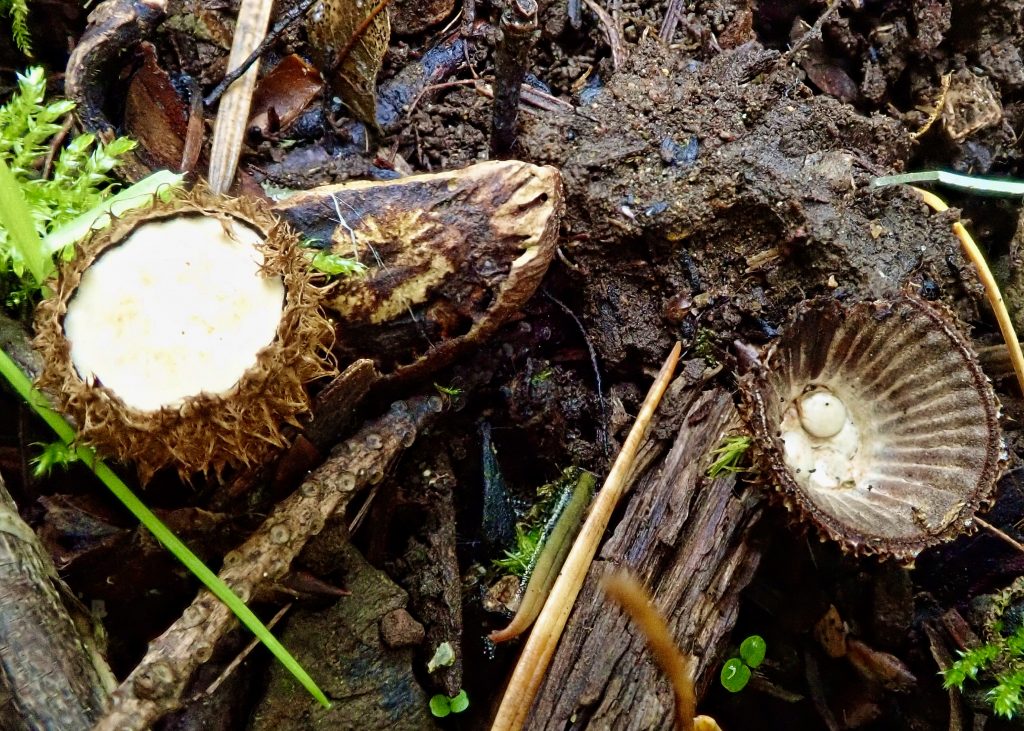
Habitat– Decaying wood, such as logs, stumps, wood chips, etc.
Range-Region wide where there is decaying wood and damp conditions.
Reproductive timing– Fruiting bodies can form at any time of the year when conditions are right, but they are far more common in the fall and early winter.
Eaten by– Slugs and snails eat many fungi, and scuttle flies and fungus gnats utilize them as larval hosts, but I can’t find anything that speaks specifically about what eats Cyathus striatus.
Etymology of names– Cyathus is Latin for cup. And striatus means ‘having furrows’. I’d say that’s about as straightforward and usefully descriptive Latin binomial as I’m ever likely to find.
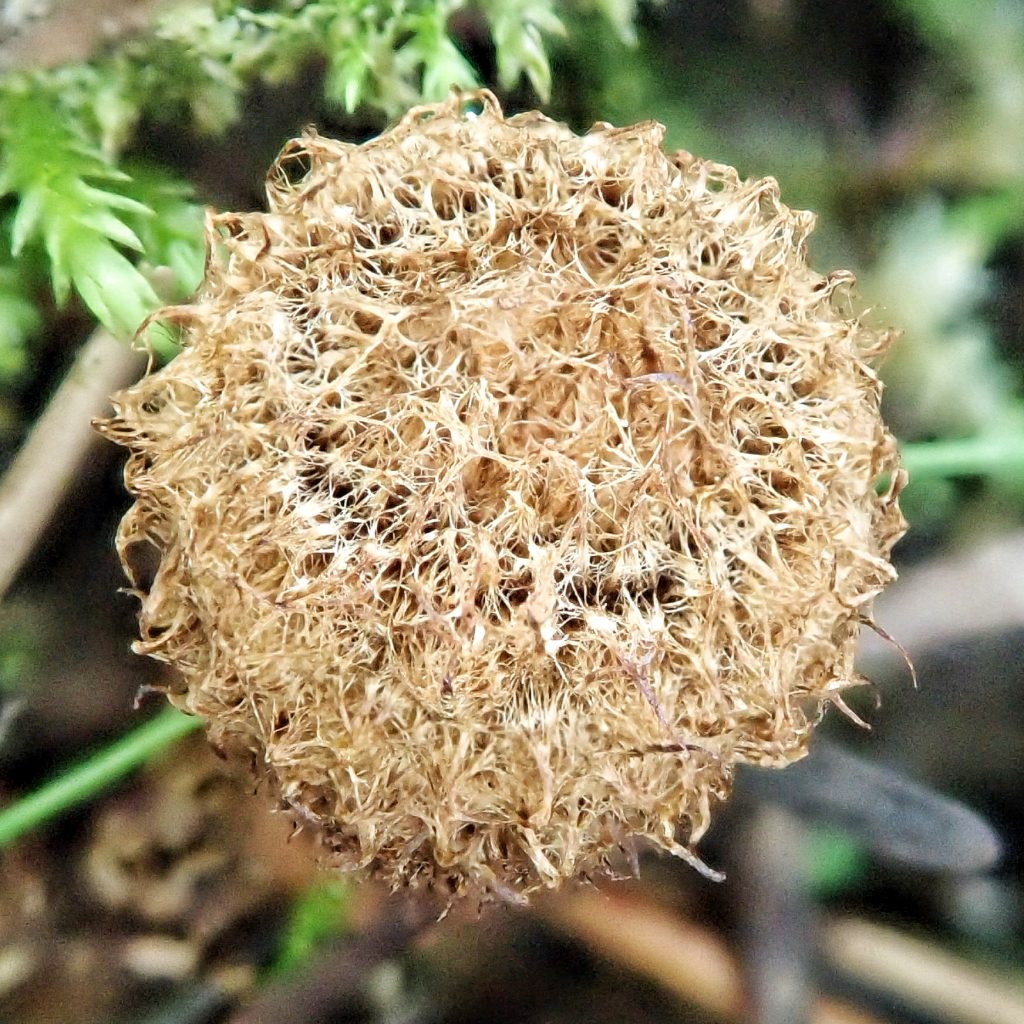
https://en.m.wikipedia.org/wiki/Cyathus_striatus
https://www.first-nature.com/fungi/cyathus-striatus.php
https://botit.botany.wisc.edu/toms_fungi/may2006.html
https://wimastergardener.org/files/2015/12/Cyathus_striatus.pdf
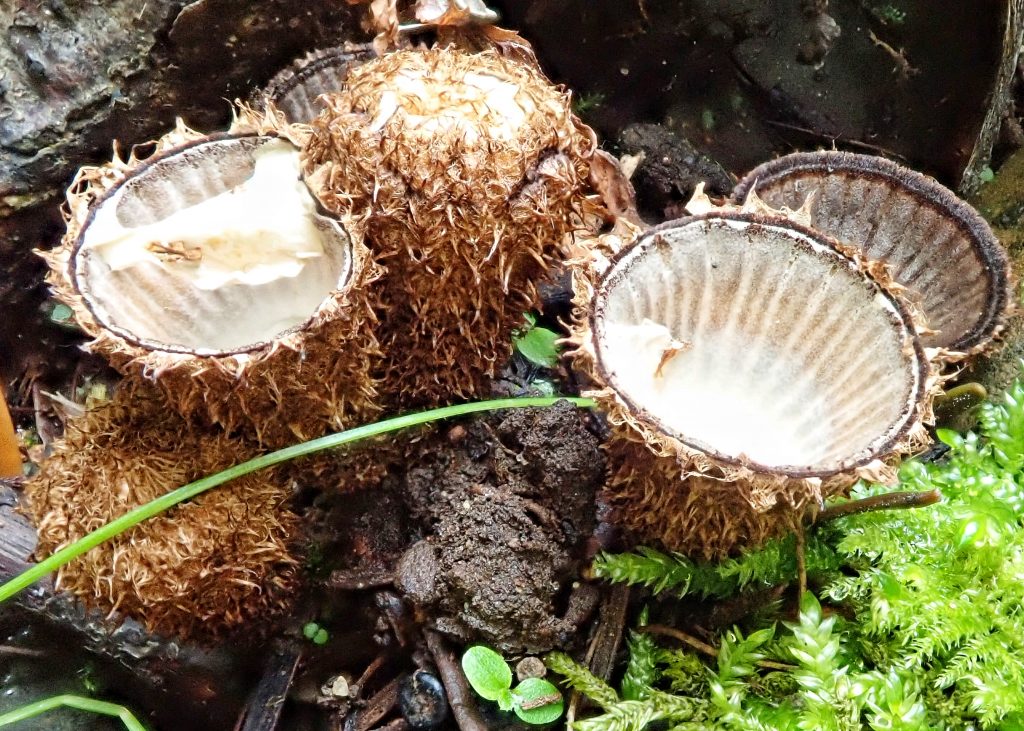
So cool! Isn’t nature amazing and magnificent! Thank you for showing this.
Really enjoyed this profile!! Looking forward to seeing them on a walk someday. Thank you ☺️